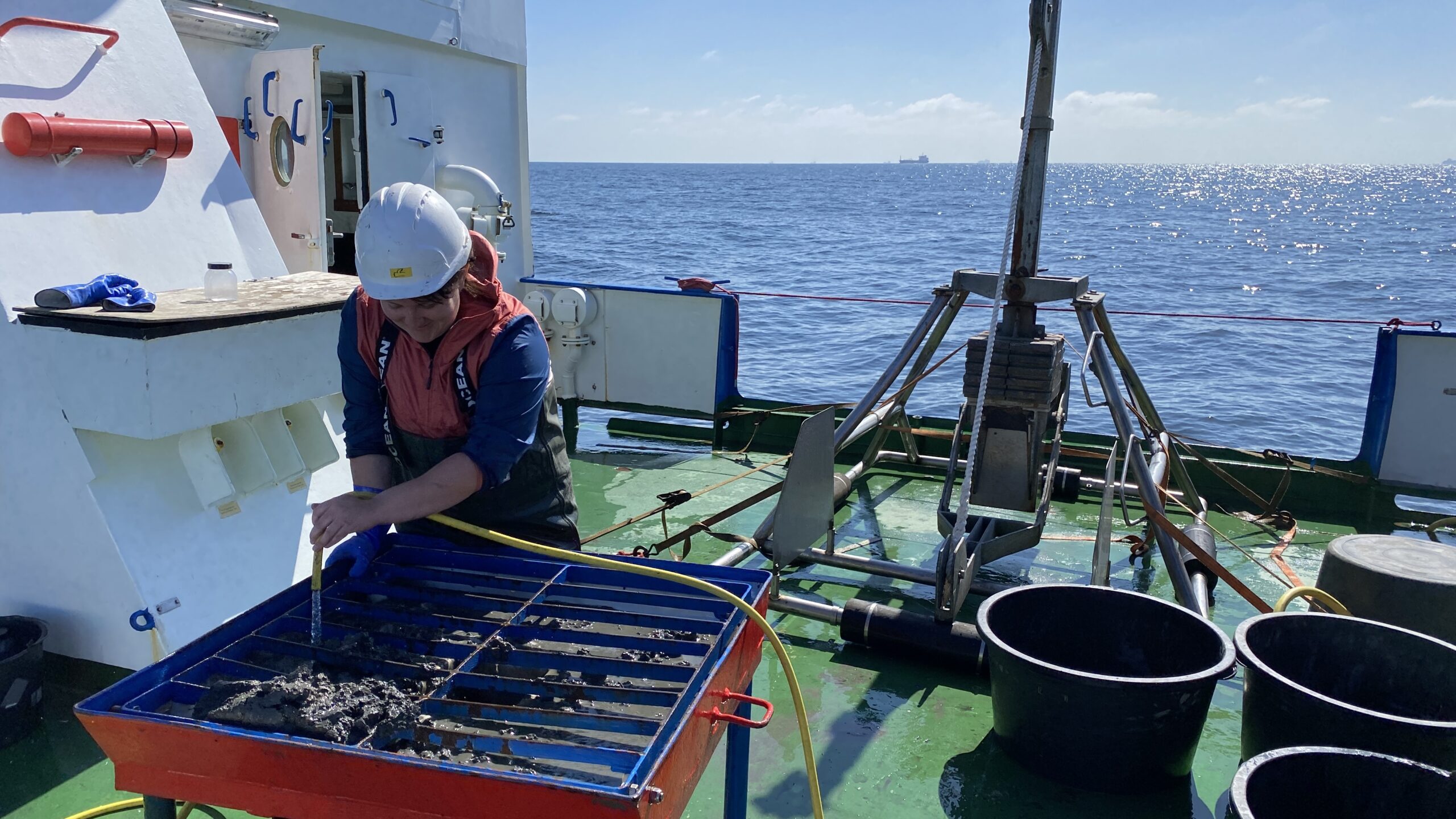Graduate Student Sheds Light on Ancient Worms as Early Ecosystem Engineers
By Andy Flick, Evolutionary Studies scientific coordinator
Graduate student Kat Turk from Vanderbilt University’s Department of Earth and Environmental Sciences, along with an international team of collaborators, has uncovered new evidence that ancient priapulid worms, through their burrowing behavior, may have been some of the earliest ecosystem engineers. The study, “Priapulid neoichnology, ecosystem engineering, and the Ediacaran–Cambrian transition” published in Palaeontology, highlights the significant impact these tiny creatures may have had on the evolutionary landscape of the Ediacaran-Cambrian transition—a period marked by the first appearance of complex life on Earth.

This newly published study involves priapulid worms, a poorly understood group of marine organisms that first appear in the Cambrian approximately 510 million years ago and still exist today. Turk and colleagues at the Senckenberg am Meer marine laboratory in Germany observed the burrowing of modern priapulids in controlled environments, recording behaviors previously unknown from the group that may suggest significant impact on seafloors when extrapolated 500 million years into the past.
In particular, the authors found that when given adequate subsurface space and sediment, priapulids will create burrows very similar in form to the trace fossil Treptichnus pedum – a little understood fossil which is used to mark the Ediacaran-Cambrian boundary and thus the advent of our modern, animal-dominated biosphere.
Turk described the study as “a major step forward in our study of modern animals and environments to better understand fossil record questions,” a discipline also known as ‘neoichnology.’ “Here we’ve shown that not only do priapulids create these burrows so similar in shape to those we find from 538 million years ago, but also that these newly documented behaviors may have had outsize impacts on their sedimentary environments via the downwards transport of oxygen and other nutrients,” Turk added.
Understanding how these behaviors emerged and evolved can provide valuable insights into early ecosystems and how life on Earth adapted to environmental changes. “Ecosystem engineering is a powerful concept in evolutionary biology,” said co-author Dr. Simon Darroch, research assistant professor at Vanderbilt. “It highlights how organisms, through their behavior, can modify their environments in ways that influence evolutionary pathways.”

The study, funded by the German Academic Exchange Service, the Association for Women Geoscientists, the Paleontological Society, and the Fulbright U.S. Student Program and published as part of the Ecological and Evolutionary Effects of Extinction and Ecosystem Engineers Research Coordination Network, adds a crucial piece to the puzzle of early life on Earth.
As Darroch put it, “understanding these dynamics gives us a clearer picture of how life evolved and adapted to changing environments in Earth’s deep past.”
Citation: Turk, Katherine A., Achim Wehrmann, Marc Laflamme, and Simon AF Darroch. “Priapulid neoichnology, ecosystem engineering, and the Ediacaran–Cambrian transition.” Palaeontology 67, no. 4 (2024): e12721.
